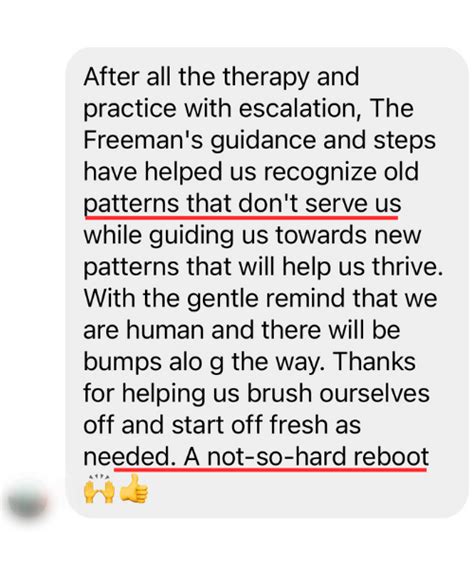Navigating disagreements in a relationship is inevitable, but how conflicts are handled can significantly impact intimacy and trust. For men, developing effective communication tactics to de-escalate partner conflict isn’t about ‘winning’ an argument; it’s about fostering mutual understanding, respect, and a stronger bond. This guide offers actionable strategies to transform heated moments into opportunities for connection.
Understanding Conflict Dynamics
Conflicts often escalate when one or both partners feel unheard, disrespected, or unfairly blamed. A common pitfall is falling into a cycle of defensiveness, where each person is more focused on explaining their own perspective than understanding the other’s. Recognizing these patterns is the first step toward breaking them.
Emotional regulation plays a huge role. When emotions run high, rational thought can diminish, leading to reactive statements that further inflame the situation. Learning to pause and regulate your own emotional response is fundamental to effective de-escalation.

Laying the Groundwork: Mindset Matters
Before diving into specific tactics, cultivate a mindset geared towards understanding and resolution, rather than debate or blame. Approach the conversation with curiosity, a willingness to listen, and the ultimate goal of strengthening your relationship, not just getting your point across.
Tactic 1: The Power of the Pause
When you feel tension rising, take a deliberate pause before responding. This isn’t about ignoring your partner, but about creating space to collect your thoughts and manage your own emotional reactivity. Take a deep breath, count to three, or simply acknowledge the need to respond thoughtfully.
A momentary pause can prevent you from saying something you might regret and allows you to choose a more constructive response.
Tactic 2: Acknowledge, Validate, and Empathize
One of the most powerful de-escalation tools is validating your partner’s feelings, even if you don’t fully agree with their perspective on the situation. Statements like, “I can see why you’d feel frustrated about that,” or “It sounds like you’re feeling really hurt right now,” show you are listening and attempting to understand.
Validation doesn’t mean agreement; it means acknowledging their emotional experience. This often disarms defensiveness and opens the door for a more productive conversation.

Tactic 3: Master “I” Statements
Shift from accusatory “you” statements (e.g., “You always do X”) to “I” statements that express your feelings and needs (e.g., “I feel frustrated when X happens because I need Y”). This takes the focus off blame and puts it on your own experience, which is harder for your partner to dispute.
For example, instead of “You never help around the house!” try, “I feel overwhelmed when tasks pile up, and I would really appreciate more help with the chores.”
Tactic 4: Active Listening – Truly Hear Them
De-escalation requires listening with the intent to understand, not just to respond. Put away distractions and give your partner your full attention. Once they’ve spoken, summarize or paraphrase what you heard to ensure you understood correctly. For instance, “So, if I understand correctly, you’re upset because you feel I dismissed your feelings earlier?”
This not only clarifies but also shows your partner that you are engaged and value what they are saying.

Tactic 5: Avoid Absolutes and Generalizations
Words like “always” and “never” are rarely accurate and tend to trigger defensiveness. Instead of saying, “You always come home late,” try to address the specific instance or feeling: “I felt worried when you came home late last night without letting me know.”
Focusing on specific behaviors and their impact is more constructive than broad criticisms.
Tactic 6: Know When to Call a Timeout
Sometimes, a conflict reaches a point where productive communication is no longer possible. If emotions are too high, or the conversation is spiraling, suggest a brief break. Say something like, “I’m feeling really heated right now, and I want to resolve this, but I need a few minutes to cool down. Can we revisit this in 30 minutes?”
Ensure you commit to reconvening. This isn’t about avoidance but about preventing further damage and returning to the discussion with a calmer mind.

Tactic 7: Focus on Solutions, Not Just Problems
Once both partners feel heard and understood, shift the conversation towards finding a resolution. Ask, “What can we do to make this better?” or “What would be a helpful next step?” Collaborate on solutions that address both of your needs, rather than focusing solely on who was “right” or “wrong.”
Tactic 8: Apologize Sincerely When Needed
If you’ve made a mistake, contributed to the conflict, or hurt your partner’s feelings, a genuine apology can be incredibly powerful. A sincere apology focuses on your actions and their impact, without excuses: “I’m sorry I interrupted you; that was disrespectful, and I can see why you’re upset.”
Taking responsibility for your part, no matter how small, can quickly de-escalate tension and rebuild trust.

Conclusion
De-escalating partner conflict is a skill that takes practice and patience. By adopting these communication tactics – pausing, validating, using “I” statements, active listening, avoiding absolutes, taking breaks, focusing on solutions, and apologizing sincerely – men can transform challenging moments into opportunities for deeper understanding and a more resilient, loving relationship. Remember, the goal is not to eliminate conflict, but to navigate it in a way that strengthens your connection.




